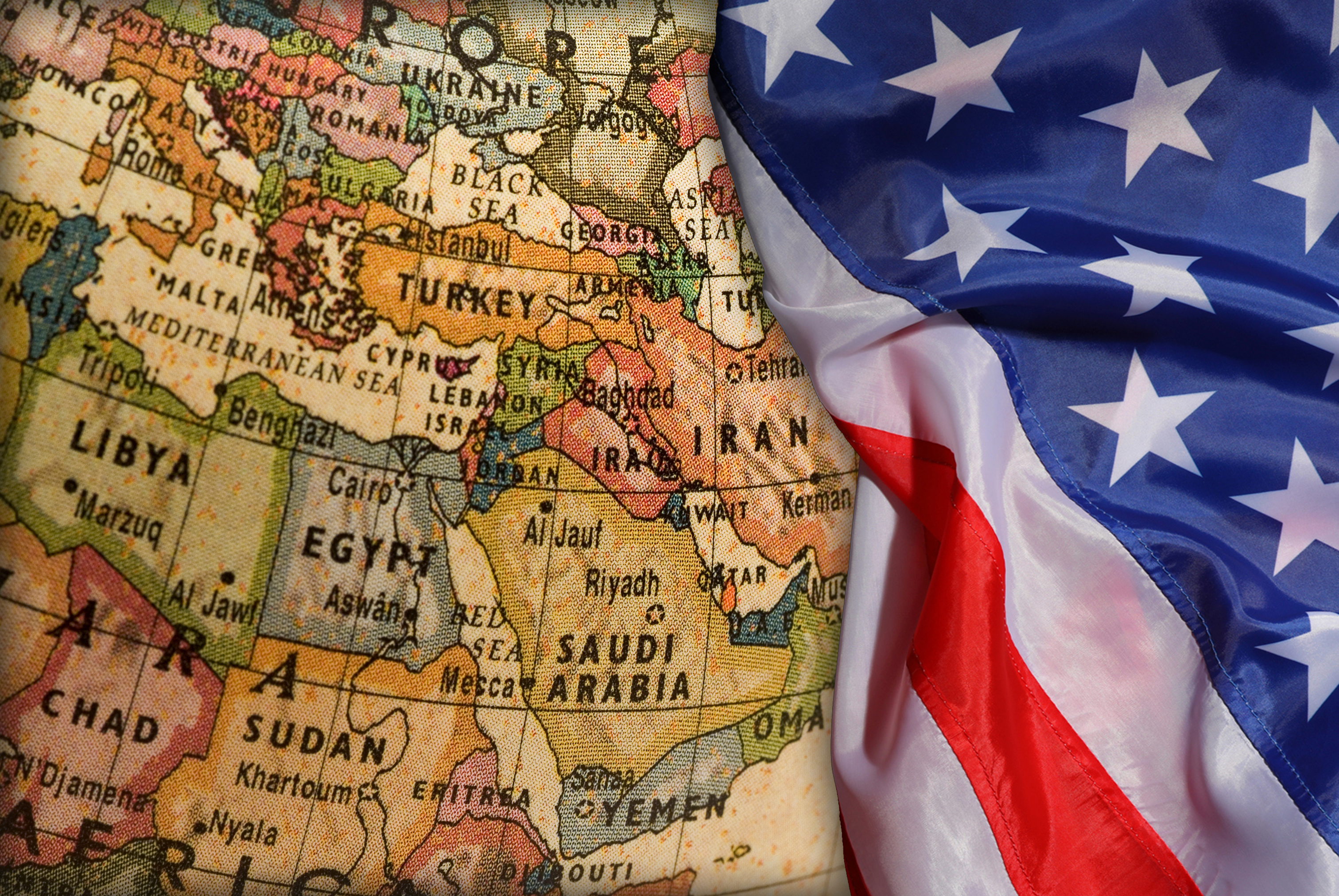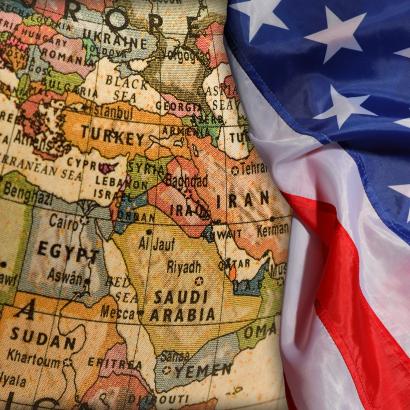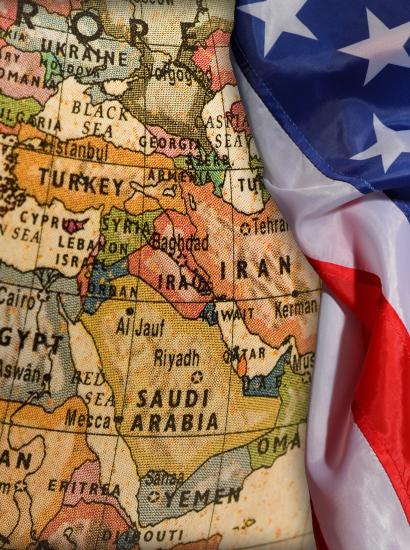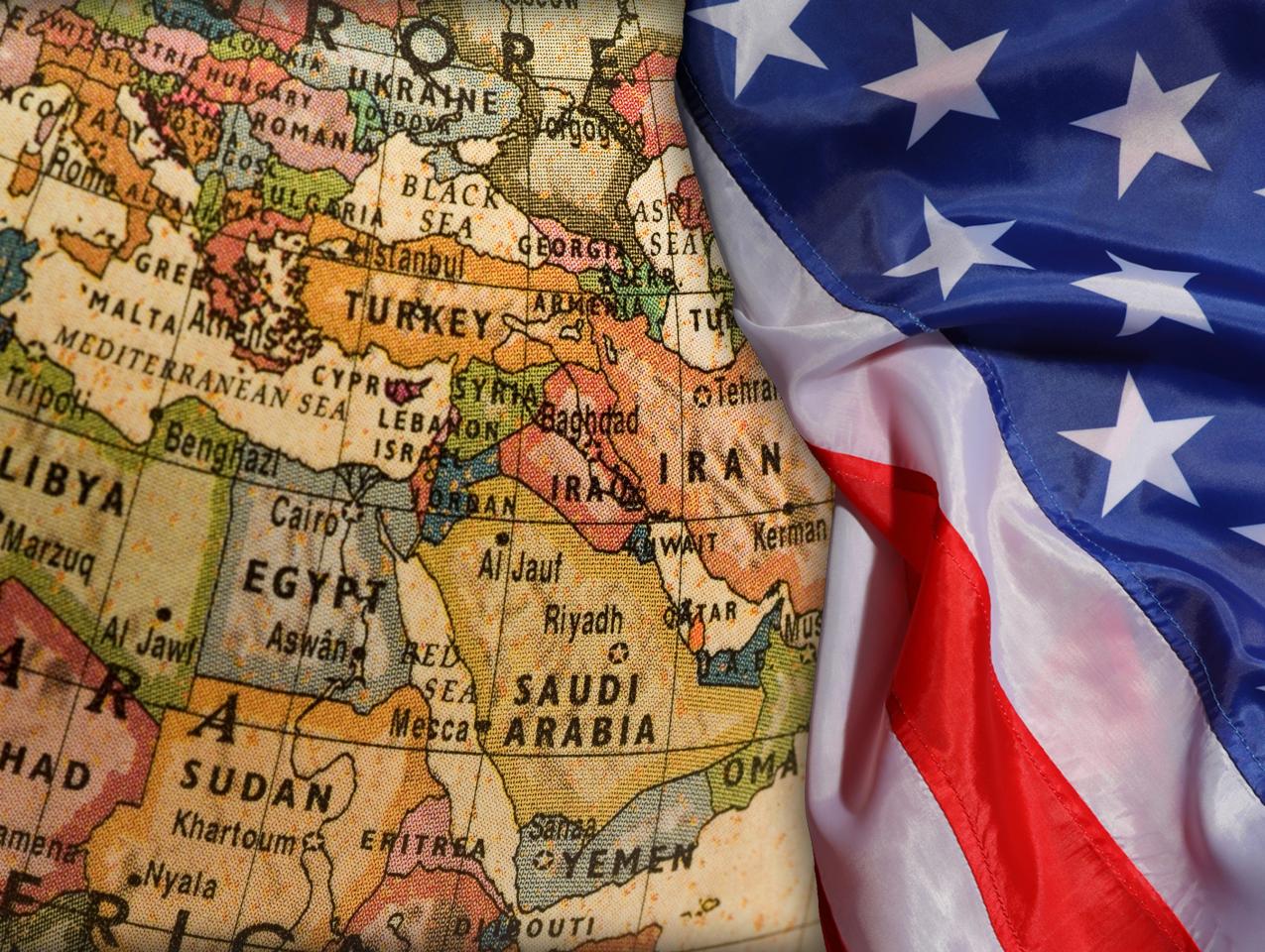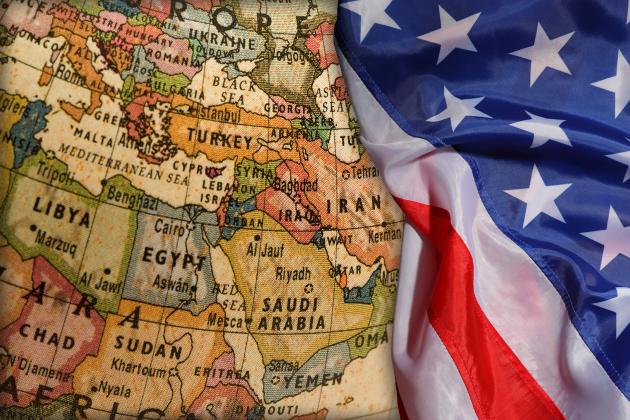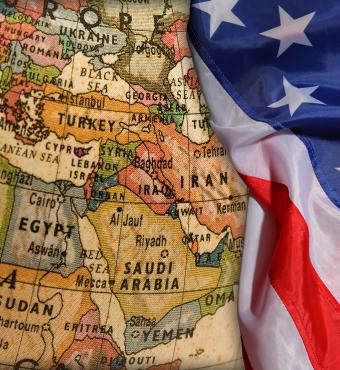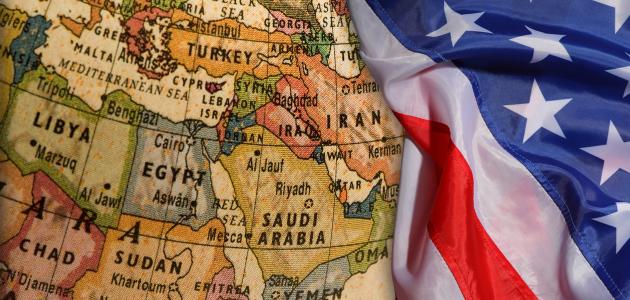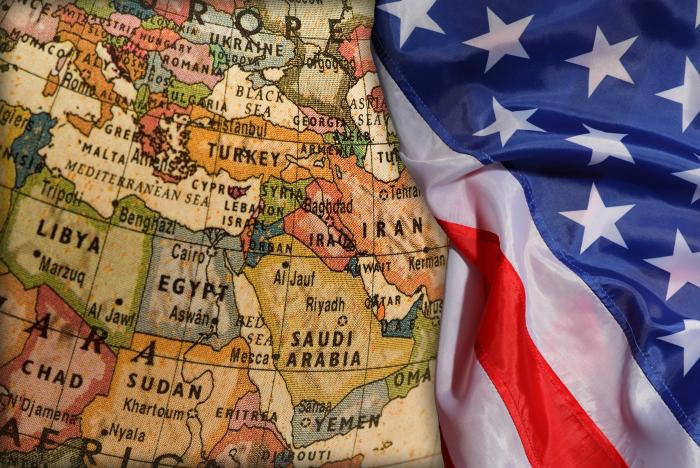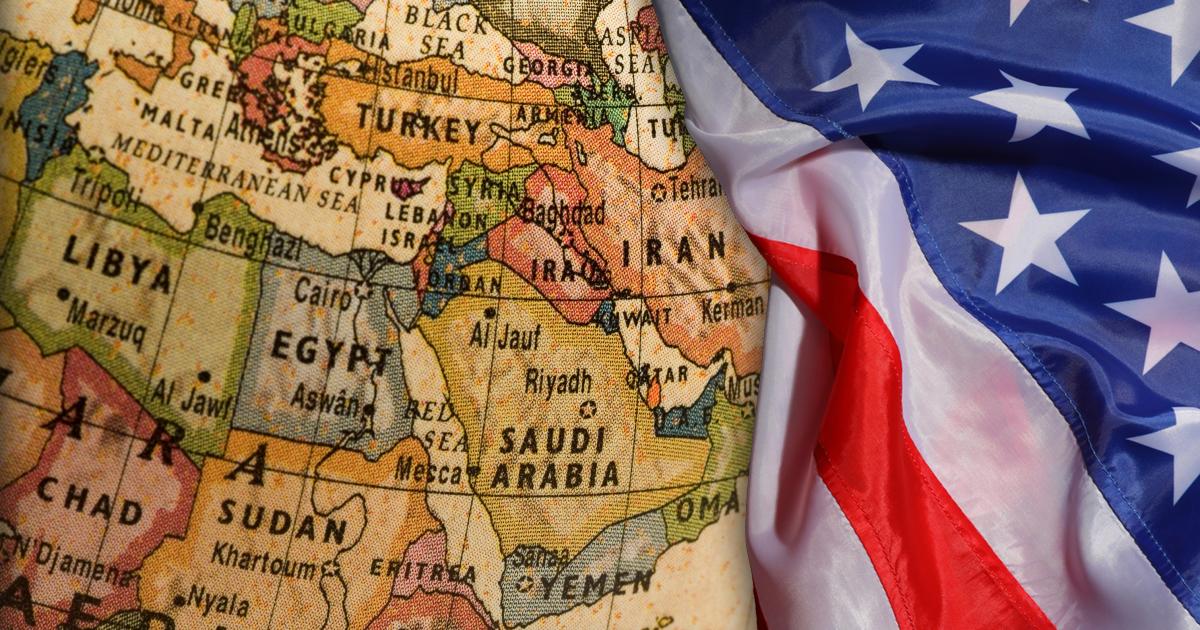- Revitalizing History
No recent U.S. president has wanted greater military involvement in the Middle East. None has been able to avoid it.
Joe Biden is now the third U.S. president in a row who sought to drawn down the U.S. military presence in the region only to find himself either stuck or drawn back in. Barack Obama moralized about the urgent need to withdraw from Iraq and rebalance toward Asia, only to see an ill-planned withdrawal produce civil strife and the rise of ISIS. Donald Trump vowed to put an end to “endless wars” but struggled to withdraw from Syria and carried out large operations against a variety of actors. Biden likewise set out to terminate America’s “forever wars.” He did manage to withdraw from Afghanistan (if in ignominious fashion) but has since been sucked into the vortex of the region’s divided politics. Hamas’s surprise attack on Israel on October 7 and the Israeli response sparked a renewed offensive by Iran’s proxies against U.S. forces in Iraq and Syria and a major challenge to freedom of navigation in the Red Sea in the form of the Houthis of Yemen.
After declaring in September that “[t]he Middle East region is quieter today than it has been in two decades,” the Biden administration has been forced to grapple with a not-so-quiet region, striking back at Iran-backed groups in Iraq and Syria and repeatedly striking Houthi military assets used to attack commercial shipping and U.S. naval forces in the Red Sea. The costs in blood and treasure have been far from negligible. In January, two Navy Seals died in the Red Sea during an operation to seize lethal aid intended for the Houthis and later three U.S. service members were killed in an attack on a U.S. base in Jordan carried out by an Iran-backed group.
It is no surprise that today one hears repeated calls for American retrenchment in the Middle East. This is an era of great power competition, so the argument goes, and therefore the United States must refocus its limited resources on the greater contests with China and Russia.
The Middle East, however, is by no means peripheral to the challenges of a rising China and an increasingly aggressive Russia. Indeed, the idea that the Middle East is merely a distraction from the imperatives of great power competition belies reality, as well as history.
The Origins of America’s Mideast Presence
It is worth recalling that the U.S. presence in the region has its origins in geostrategic rivalry with the Soviet Union. In the early Cold War period, the United States recognized the Middle East as a key strategic area that could not be ceded to Soviet influence without suffering grave consequences to its own security. With the Truman Doctrine of 1947 and the Eisenhower Doctrine a decade later, Washington resolved to provide economic assistance and deploy military force to prevent Middle Eastern states from succumbing to the threat of “international communism.” To this end, following nationalist revolutions in Egypt and Iraq, the United States dispatched forces to Lebanon in 1958 with the aim of stemming the revolutionary tide. Meanwhile, British paratroopers landed in Jordan in hopes of preserving the stability of that country.
The general framework of American policy in this period was given the name “defense of the Middle East” by the American political scientist and former State Department official John C. Campbell. In an influential book of that title published by the Council on Foreign Relations in 1958, Campbell charted the rise of American power in the region and the decline of the British role in the years following World War II. Echoing the thinking of American policymakers, he argued that a strong American presence in the Middle East, one that defended the area from Soviet encroachment, was critically important to U.S. national security.
“Soviet control of the Middle East,” he wrote, quoting President Eisenhower, “‘would have the most adverse, if not disastrous, effect upon our own nation’s economic life and political prospects.’” In Campbell’s view, the Middle East was important for its location on the soft underbelly of Europe—“territory of great strategic importance … which if it fell into the hands of a hostile power would certainly be used against us”— but also because of its vast oil resources critical to European economic security. As Campbell wrote, “Once in control of Middle Eastern oil, Moscow would have its grip on Europe’s jugular vein. It could hardly be long before our European allies would be forced to consider accommodation on Soviet terms which would leave the United States isolated … The whole uncommitted world would see the writing on the wall. NATO would be outflanked.”
Campbell’s framework of “defense of the Middle East” is helpful for understanding American thinking about the region throughout the Cold War. Another Cold War presidential doctrine, the Carter Doctrine, was based on the same premise. Following the Iranian revolution and Soviet invasion of Afghanistan in 1979, President Carter declared that “an attempt by any outside force to gain control of the Persian Gulf region will be regarded as an assault on the vital interests of the United States of America, and such an assault will be repelled by any means necessary, including military force.” This was the catalyst of America’s vast deployment of military assets across the Gulf region.
The Gulf War and “Defense of the Middle East”
With the end of the Cold War, the idea of “defense of the Middle East” did not suddenly vanish, as the United States continued to see the region, and the Persian Gulf especially, as a strategic area to be shielded from hostile forces. The challenge to the American order in the region came quickly in the form of Saddam Hussein’s invasion of Kuwait in 1990, a move that prompted President George H.W. Bush to dispatch forces to Saudi Arabia to prevent a possible Iraqi invasion of the oil rich Saudi eastern province. The United States then organized and led a coalition to restore Kuwaiti sovereignty.
The major task of articulating the American rationale for war fell to Vice President Dan Quayle, who in a famous address at Seton Hall University on November 29, 1990 outlined the United States’ traditional strategic objectives in the Middle East. These objectives were (1) “to contain Soviet expansionism,” (2) “to prevent any local Middle Easter power from achieving hegemony over its neighbors,” and (3) “to secure the uninterrupted supply of oil at a reasonable price.” While the first of these goals had already been realized, the second and third remained firmly in place. Saddam was an aspiring hegemon who threatened America’s allies and the regional status quo. His aim was “to dominate the Persian Gulf region,” and so, pursuant to America’s traditional strategic imperatives, his bid for regional hegemony had to be opposed. Though he did not use the phrase “defense of the Middle East,” this was essentially the framework he was articulating. Whereas the great threat to the Middle East from an American perspective had previously been from the Soviet Union, it was now a regional power, Saddam’s Iraq, that had to be contained.
The Interruption of “The War on Terror”
All this would soon be interrupted by the War on Terror that followed the attacks of September 11, 2001, leading to the U.S. invasions of Afghanistan in late 2001 and Iraq in early 2003. The undertaking of such missions of regime change and democratic transformation were out of step with the traditional American approach to the region, which was generally far less concerned with the domestic political arrangements so long as these did not offend American interests. What President George W. Bush called a “forward strategy of freedom” was a marked change in outlook, and one that would prove difficult to sustain. Over time, the strategy produced the “endless” or “forever” wars that became the source of popular frustration fueling calls for retrenchment and withdrawal.
Today, the “forward strategy of freedom” is no longer the guiding principle of American policy in the Middle East, and America has struggled to comprehend what its role in the region ought to be. One of its stated rationales for continued involvement is the effort to defeat and degrade the jihadi group known as ISIS, which continues to operate in Iraq and Syria on a low level. But the stationing of U.S. troops in these countries—some 900 in Syria and 2,500 in Iraq—has invited repeated attacks by Iran-backed militias that aspire to expel the American presence. The arming and training of these groups is part of a broader Iranian strategy for expelling the United States from the region entirely.
Much like Saddam’s Iraq in 1990, the Islamic Republic of Iran is an aspiring hegemon with hostile intentions toward America’s regional partners and American interests. To defend against this threat would be consistent with the “defense of the Middle East” paradigm outlined by Campbell and updated by Quayle during the Gulf War. But not all American policymakers have seen the situation in this way. It was President Obama’s view that Iran and its Gulf adversaries ought to learn to “share the neighborhood,” as he put it in an interview with Jeffrey Goldberg in 2016, that the United States ought to stay above the fray. Rather than containing or pushing back against Iranian malign influence, Obama believed that it was in the American interest to adopt a more neutral stance that would allow for the emergence of some kind of Arab-Iranian condominium.
While the Iran nuclear deal of 2015, or JCPOA, was strictly speaking an agreement on matters of nuclear enrichment and arms control, it was no doubt motivated by the neutralist type of thinking on display in Obama’s 2016 interview. This thinking was flawed in conception, however, as Iran never had any interest in “sharing” the region in the first place but rather was—and remains—an avowedly revisionist power. Today this fact is hard to ignore. The region is divided between status quo powers such as Saudi Arabia, the United Arab Emirates, Egypt, and Israel, on the one hand, and Iran and its network of proxies (from Hamas and Lebanese Hezbollah to Kataib Hezbollah and the Houthis), on the other. It is a division that can be managed and controlled but not overcome—certainly not with expressions of neutrality and goodwill.
In Defense of “Defense of the Middle East”
Apart from defeating jihadi terrorism, the objective of U.S. policy in the Middle East ought to be to support and defend our Arab allies from the hegemonic ambitions of a hostile Iran and its network of proxies. This is the framework of “defense of the Middle East.” It also applies, in the current circumstance, to our great power rivals, particularly China. As Lt. Gen. Alexus Grynkewich of U.S. Central Command recently commented, the Middle East today is “fertile ground for strategic competition,” and “there is a risk of Chinese expansion into the region militarily” following from economic expansion. This risk, no doubt, will grow substantially in the event of a large-scale withdrawal of U.S. forces from the region.
The Middle East still remains a region of tremendous strategic importance for the United States. One can argue for a trimming of the American force commitment—some 45,000 troops scattered across dozens of bases, most of them in the vicinity of the Persian Gulf—but one cannot reasonably assert that the region carries no strategic value and ought to be abandoned. For one thing, the global economy continues to run on fossil fuels and will continue to do so for decades to come. That means that a hostile power in control of the Persian Gulf would control some one-third of the world’s oil production and around half of the supply. While counterterrorism remains a major reason for America’s continued involvement, the traditional framework of “defense of the Middle East” remains primary.







